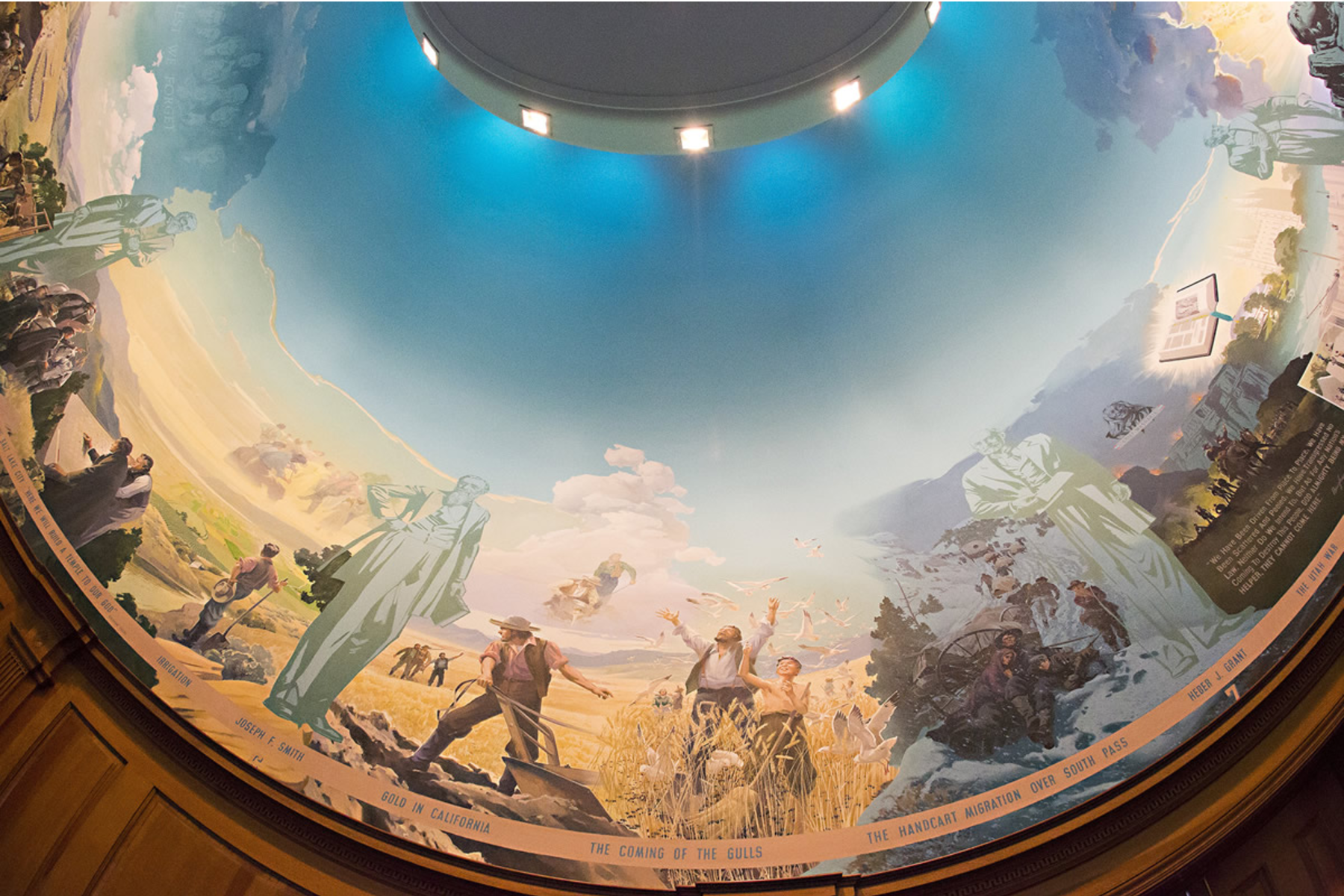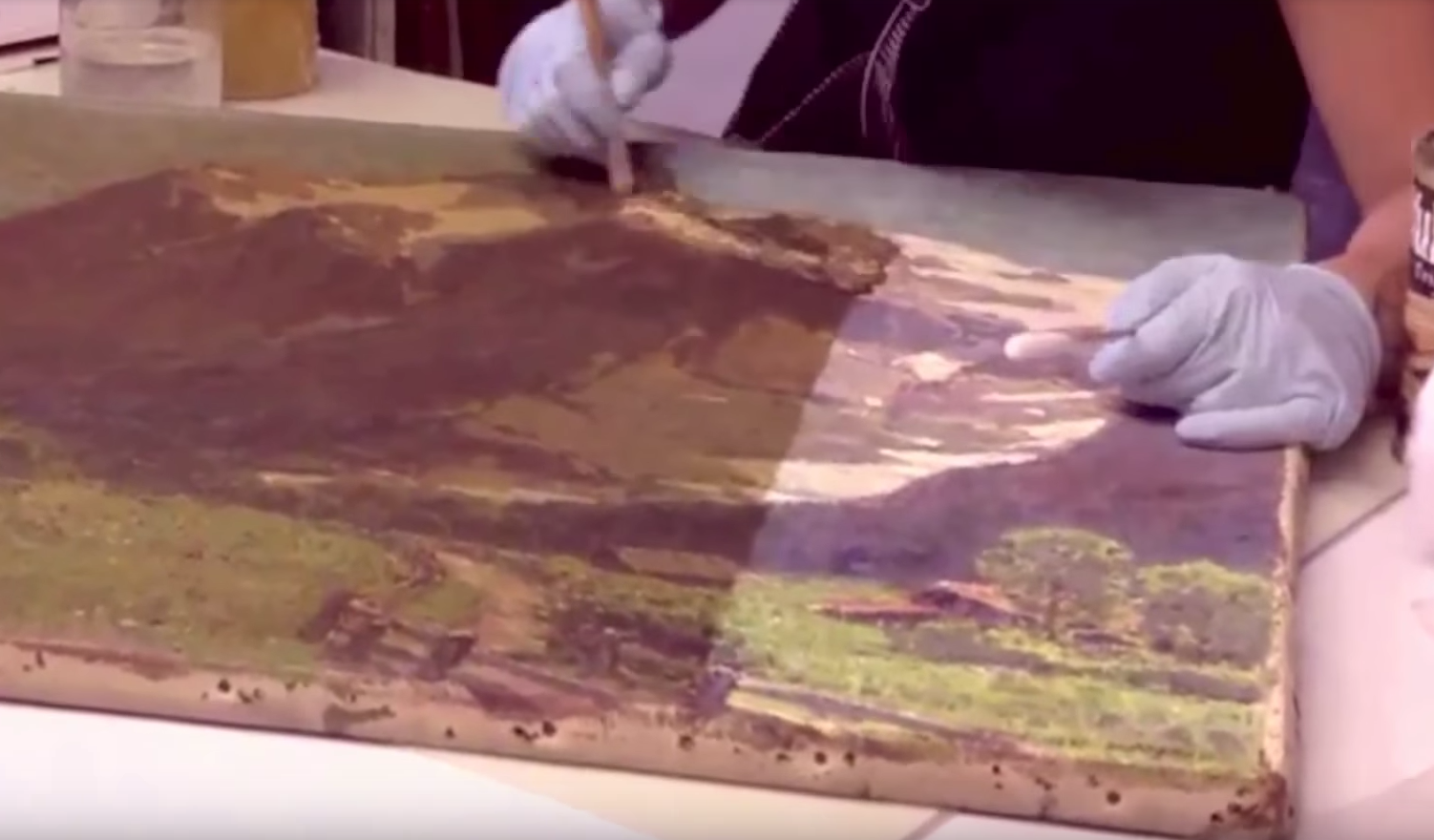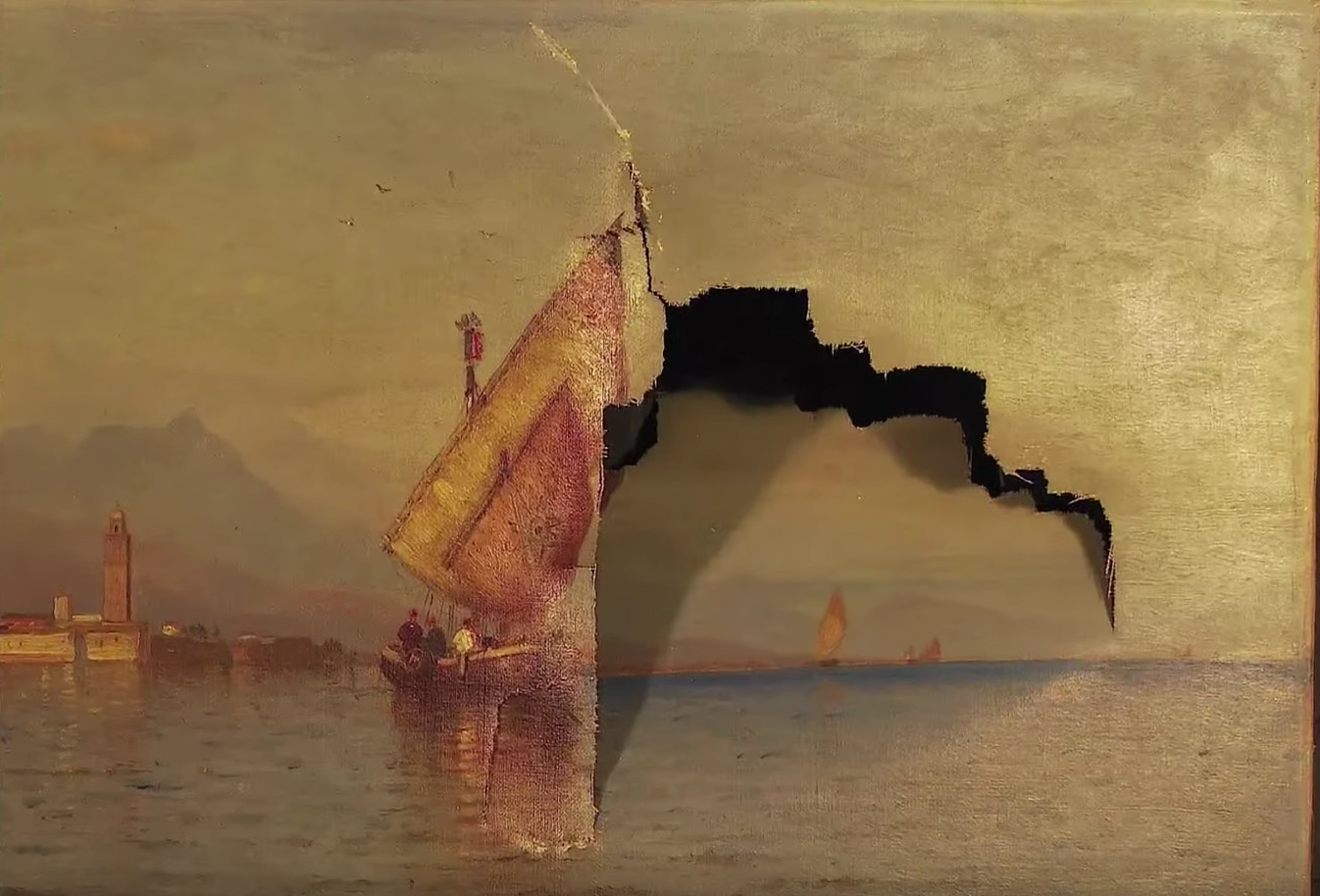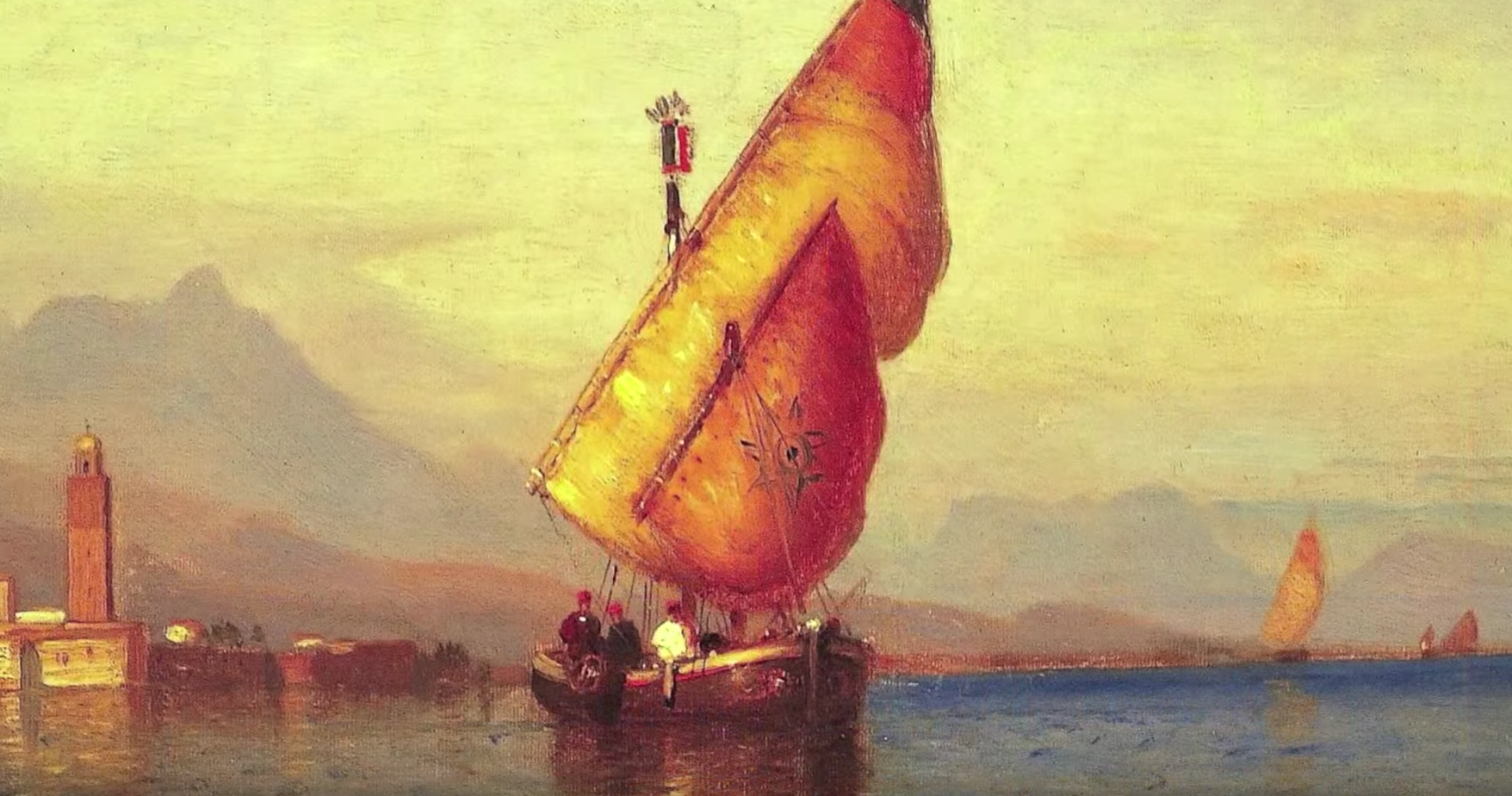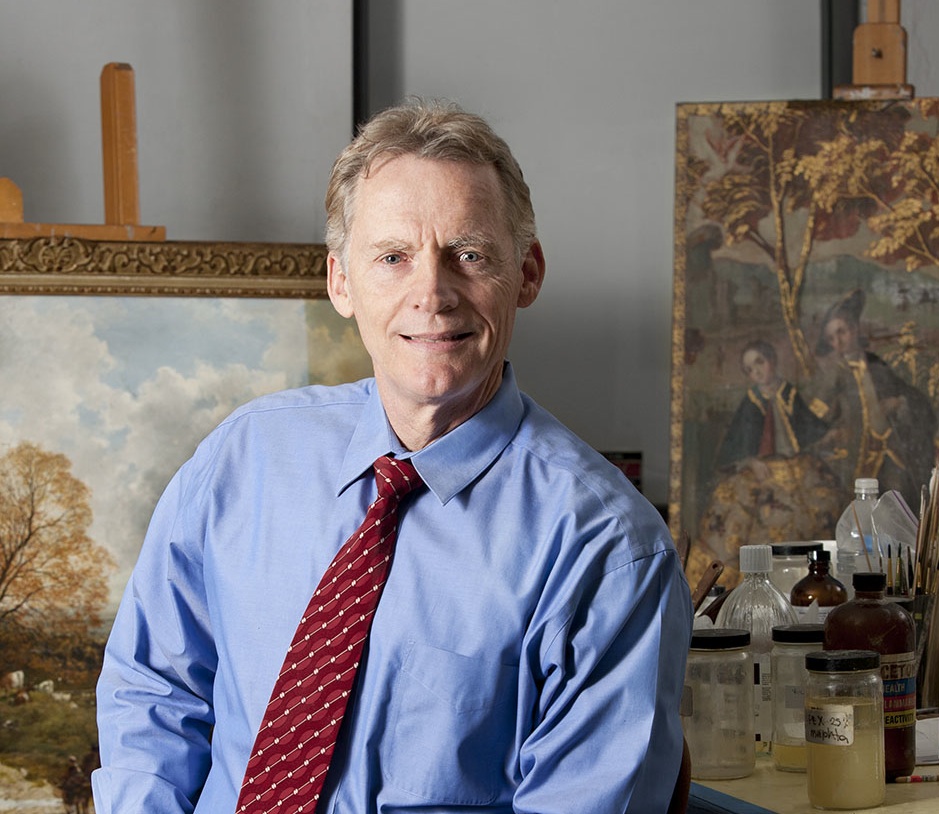Scott M. Haskins has been a master art conservator since 1975, specializing in the conservation and restoration of easel paintings, murals, and art on paper. He attended the Lombardy Italy Regional Art Conservation Center and was previously the Head of Conservation at BYU. Haskins was even seen on Keeping Up With The Kardashians. He lives in Santa Barbara, California.
You once said art conservation is the “perfect marriage of my two main interests: the application of science to the preservation and restoration of art.” The forensic science must constantly be evolving. How has the ‘craft’ of what you do been affected by new developments? People are sometimes amazed when I insist I am not an artist. There is nothing creative about what I do. Their response is, “Well, you are surrounded by art all day long!” Yes, well, but that doesn’t make me an artist. Even though I know how to put a painting together, I’ve never painted a painting in my life. I often draw a parallel example with a dentist. You want your dentist to know what’s going on and get the analysis correct. But you want him to be good with his hands too… or apply it to a surgeon. So, with advancements in technology, there has been no automation of the craftsmanship aspect of what we do. On the other hand, forensic science allows us to delve into the unseen, gives us more information… but as in other areas of society, just because the Getty Conservation Institute can afford the $ multimillion equipment doesn’t mean there is a trickle down affect to the private sector. In a for-profit business, the king is cash flow.
You studied in Italy and have run your own fine art restoration business for many years. What do you still enjoy or find exciting about your field? There are many reasons why I enjoy the field of art, in general; you meet interesting people, its been a good excuse to travel and an enjoyable and enlarging thing to do/see when I travel, my field of art conservation of historic works has an influence on future generations and therefore has a socially conscious feel to me, I interact with a wide variety of professional people which I enjoy, I’m a well accomplished specialist in my field and enjoy that notoriety.
You’ve done a lot of work for the Church over the years. How have attitudes about art evolved within the Church? I can’t say regarding the contemporary art market or policies. But I have seen a positive evolution in the importance that the Church gives to its “art collection,” the oversight and care it strives for with its historic sites and art assets and the commitment and care the Church provides to its historic art. The biggest evolution in the Church (art administration and curatorial efforts) has been in the hierarchy of stewardship that continues to evolve for the better… or maybe I should say in a more efficient manner.
You are very active on social media. What has been the drive behind these efforts? What has been the response? The art conservation profession is intent on public education and outreach. After all, with a profession that has a social conscience, we ought to reach out to society, don’t you think? Its best used in connection with groups of people, already organized, that are like-minded. Its benefit for growing small businesses is limited as the search engines and the social media companies are not good friends. Private website blogs are different for benefiting small business than social media if you know how to use them.
Visit the website for Fine Art Conservation Laboratories.
